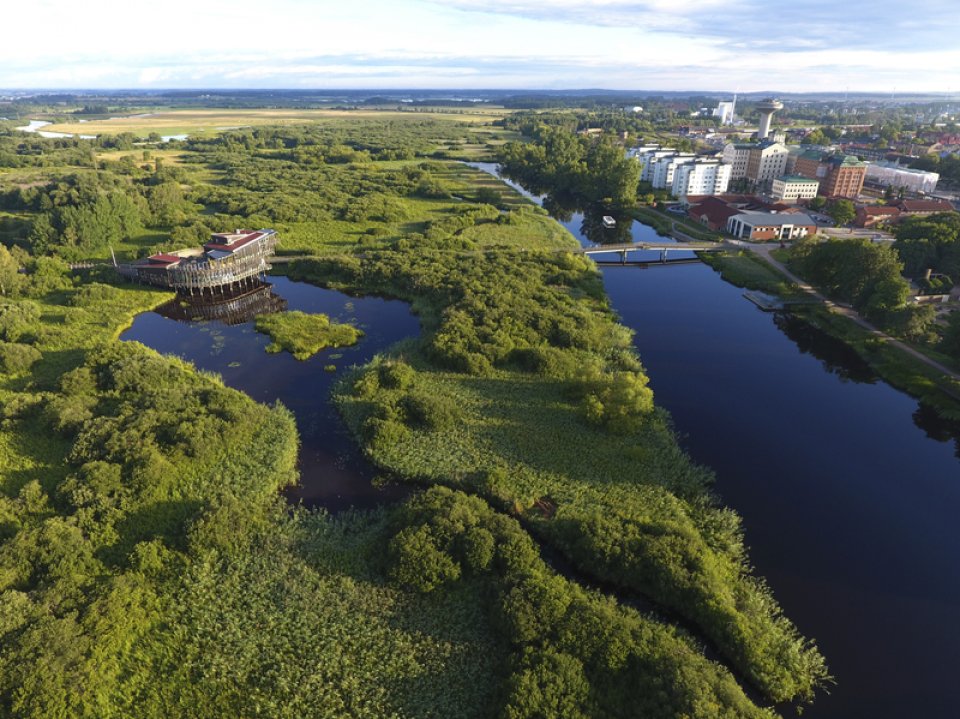
In 2005, the UN agency UNESCO approved Kristianstads Vattenriket as a biosphere reserve covering 100 000 ha, and one of 700 in the world. This means Kristianstads Vattenrike is an internationally recognized model for sustainable development. The Vattenrike encompasses two thirds of the municipality of Kristianstad, with the goal to “preserve, develop and support the landscape's values”.
Nature-based solutions have been key for protection against droughts, floods, and preservation of the area, as well as nutrient leakage into the Baltic Sea.
The areas in Vattenriket include wetlands that were formerly used as landfills or drained for arable land, but now reduce nutrient leakage in the sea, act as carbon sinks, and host an abundance of biodiversity. The restored wetlands and sandy grasslands support the majestic river Helge å, reducing the run-off into the Hanöbukten Bay.
Furthemore, a natural hydrological cycle is being developed, for example rewetting peatlands contains the greenhouse gasses and creates better groundwater formation. These in turn aid the production of forest land and decrease the risk of forest fires.
Vattenrike has long been engaged in awareness campaigns and programs that teach the benefits of nature-based solutions. These educational programs and experiences are offered both to tourists, citizens and school children.
Vattenriket has worked in close collaboration with many researchers on the reconstruction of new wetlands, as well as programs that raise awareness about Nbs.
The work is pursued by the Biosfärkontoret, Naturum Vattenriket visitor center, and the municipality of Kristianstad.
Carbon sinks
Flood reduction
Drought mitigation
Fostering biodiversity
- Reduce drought risk
- Reduce flood risk
- Reduce run-off
- Developing climate change mitigation
- Carbon sequestration and storage
- Greater ecological connectivity across urban regenerated sites
- Improve connectivity and functionality of green and blue infrastructures
- Increase Biodiversity
- Enhancing sustainable urbanisation
- Improve water quality
- Increase accessibility to green open spaces
- Increase amount of green open spaces for residents
- Increase awareness of NBS solution & their effectiveness and co benefits
- Increase stakeholder awareness & knowledge about NBS
- Increase willingness to invest in NBS
- Social learning about location & importance of NBS
- 6. Clean Water and Sanitation
- 11. Sustainable Cities and Communities
- 13. Climate Action
- 14. Life Below Water
